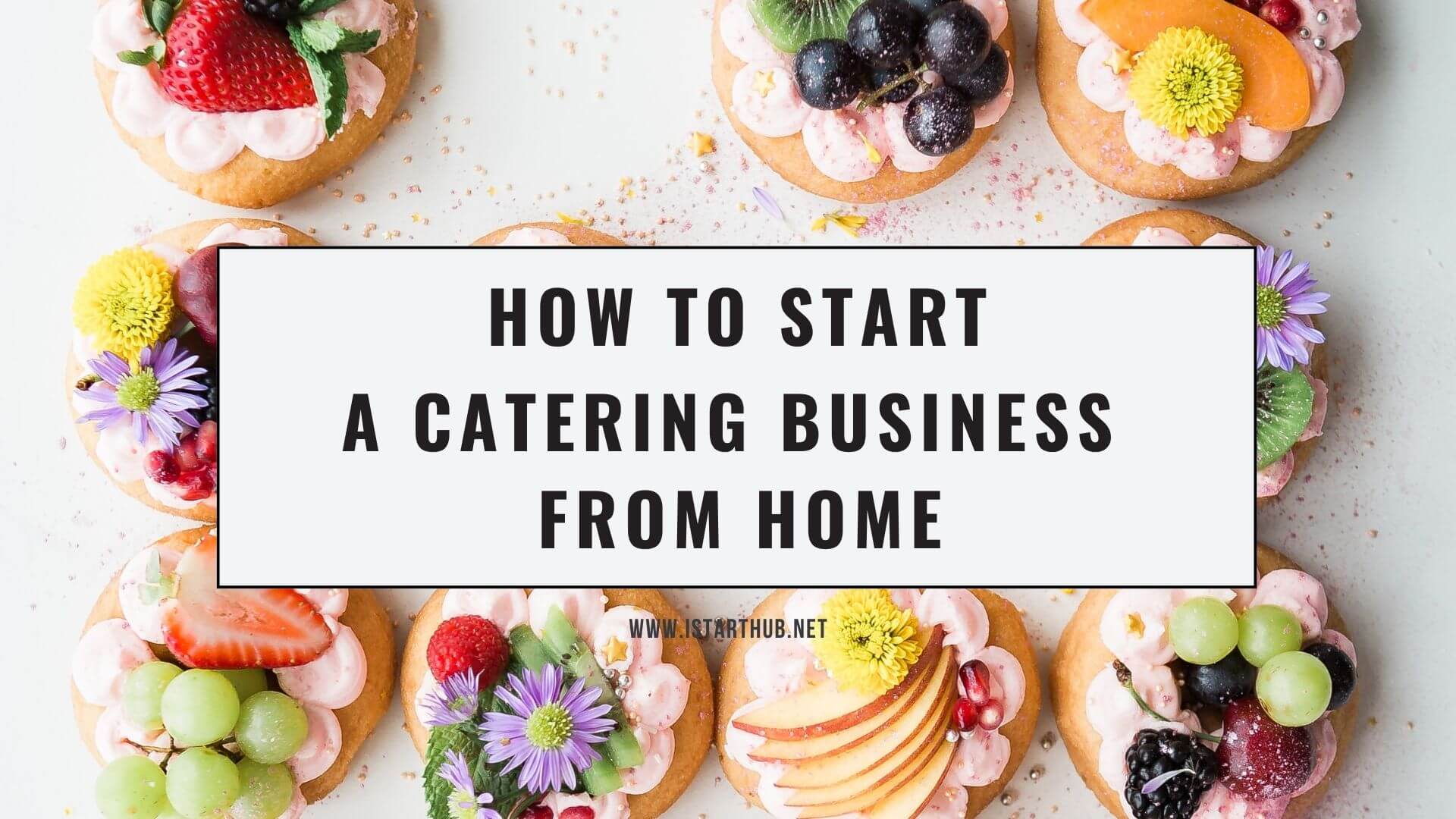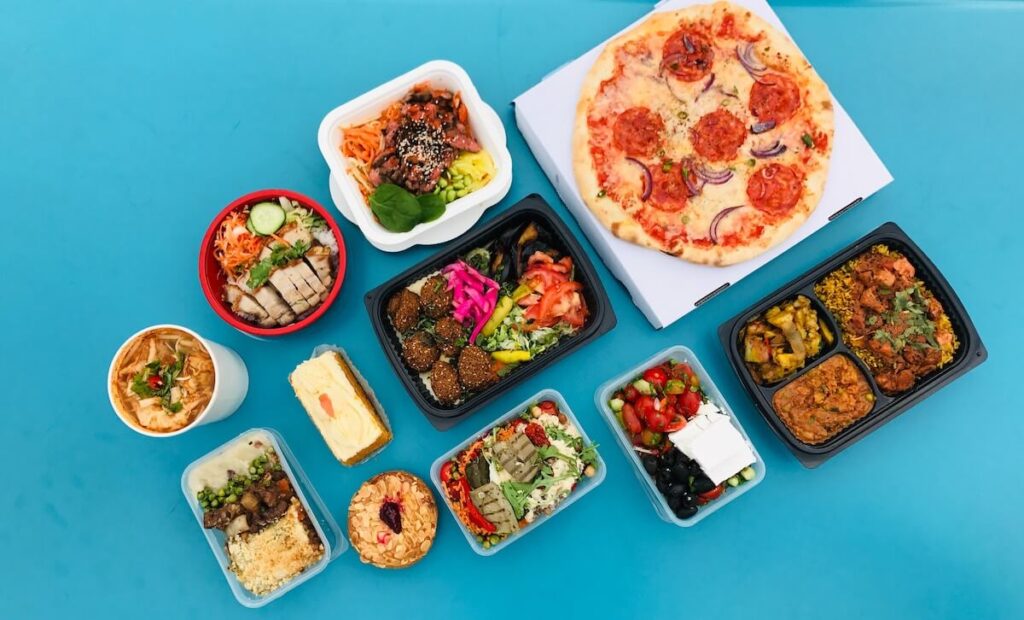Now Reading: 9 Simple Steps On How To Start A Catering Business From Home
- 01
9 Simple Steps On How To Start A Catering Business From Home
9 Simple Steps On How To Start A Catering Business From Home

Are you a culinary addict considering turning your passion into a thriving business? Starting a catering business from home could lead to fast growth. In this guide, I will walk you through the essential steps, and strategies that help you understand how to start a catering business from home.
From legal requirements to menu planning, you’ll get insights to turn your passion into profit. So, let’s start!
[lwptoc]
Catering Business Market Overview

image source: Statista
The catering business industry is constantly growing. Just imagine the market size will reach $378.39 billion by 2026 with an 8.2% compound annual growth rate.
Amazing, right?
Despite the catering market growth, starting a catering business has other compelling benefits. Here they are:
- Lucrative market: The consistent growth and substantial market size indicate a steady demand for catering services. Entrepreneurs entering this field can tap into a financially rewarding market.
- Multiple revenue streams: Catering businesses can serve a diverse clientele, including individuals, corporations, organizations, and event planners. As a result, you will access multiple revenue streams and opportunities for expansion.
- Creativity and innovation: Catering allows for culinary creativity and innovation. You can craft unique menus and experiences to set your businesses apart from competitors.
- Flexibility: The catering industry is flexible in event types, sizes, and locations. Entrepreneurs can adapt to various client needs, from intimate gatherings to large corporate events.
- Start with a low income: Home-based catering businesses can operate with low overhead costs, making it accessible for startups with limited capital.
- Loyal clients: Satisfying clients can lead to repeat business and referrals, fostering long-term relationships and a strong reputation.
- Seasonal Opportunities: Catering businesses can capitalize on seasonal events, holidays, and special occasions, creating additional income during peak periods.
Catering business ideas
Your choice of catering niche should align with your culinary expertise and the demand in your target market. If you are still not sure where to start, here are some catering business ideas:
- Wedding Catering: You can specialize in catering for weddings and offer menu options for this market.
- Corporate Catering: Focus on providing catering services for corporate events, meetings, and conferences.
- Boxed Lunch Delivery: Offer a convenient boxed lunch delivery service for offices, schools, or events.
- Food Truck Catering: Operate a food truck that caters to various events, from festivals to private parties.
- Dietary Catering: Create a catering business that focuses on healthy, organic, or dietary-specific menu options, such as gluten-free or vegan catering.
- Ethnic Cuisine: Specialize in a particular cuisine like Italian, Mexican, or Asian, or offer unique specialty dishes that set you apart.
- Dessert Catering: Concentrate on dessert catering, providing a variety of sweets and treats for events.
- Farm-to-Table Catering: Offer locally sourced, fresh ingredients in your catering menu.
- Family-style Catering: Family-style catering with large platters of food for sharing can be popular for gatherings and celebrations.
- Meal Prep Services: Provide meal prep and delivery services for busy families looking for healthy and convenient options.
- Themed Events: Create a niche by offering catering for themed events like Hawaiian luaus, BBQs, or holiday parties.
- Food and Wine Pairing Events: Cater events that pair gourmet dishes with fine wines, appealing to wine enthusiasts.
- Kids’ Party Catering: Offer catering services tailored to children’s parties and events with kid-friendly menus.
- Breakfast and Brunch Catering: Focus on breakfast and brunch options for corporate meetings, weddings, and weekend gatherings.
- Cooking Classes and Catering: Combine catering with cooking classes, teaching clients how to prepare their signature dishes.
- Pop-up Restaurant Events: Organize pop-up restaurant events in different locations, showcasing your culinary skills and menu.
10 steps on how to start a catering business from home
Are you ready to start? Make sure to follow each step!
1. Create a catering business plan
The first step to starting a catering business from home is creating a catering business plan. It will give you an opportunity to describe your vision and become your business tool when growing. A catering business plan demonstrates your commitment to the venture and ability to execute it successfully. So, here are the main business plan components:
Executive Summary
Start your business plan with an executive summary with an overview of your catering business. Include your mission statement, a brief description of your business concept, and your goals.
Business Description
Describe your catering business concept, including the type of cuisine you’ll specialize in, the target market you aim to serve, and the unique value you bring to the market. If you are still not sure about it, read the first part of the article with catering business ideas.
Market Analysis
Conduct thorough market research to understand your target audience, their preferences, and the competitive landscape. Identify your competitors and analyze their strengths and weaknesses.
Marketing and Sales Strategy
How will you promote your catering services?
What pricing strategies will you employ to remain competitive?
Outline your marketing and sales strategies.
Menu Development
Describe your menu, including the types of dishes and any specialty items. Explain how your menu aligns with market demand and your business concept.
Operational Plan
This part is more about your day-to-day operations in the catering business. Include information about your kitchen facilities, equipment, and the procurement of ingredients.
Team Structure
Will you hire a team or start by yourself? Define the roles and responsibilities of your team members, if applicable. Highlight the qualifications and expertise of key staff members, such as chefs and event coordinators.
Income Projections
Create financial projections covering startup costs, monthly expenses, revenue forecasts, and profit margins. Include a break-even analysis to determine when your business is expected to become profitable.
Funding Needs
Determine if you need loans or investments to start or expand your catering business. Explain how you plan to secure this funding.
Risk Assessment
Identify potential risks and challenges your catering business may face, such as food safety issues, market fluctuations, or equipment breakdowns. Develop strategies to mitigate these risks.
Milestones
Create a timeline with milestones to track your progress. Milestones could include launching your website, booking your first event, or reaching a certain revenue target.
Exit Strategy
Consider your long-term goals and potential exit strategies. This could involve selling the business or expanding into other markets.
2. Legal Check
Before you even put on your chef’s hat, get your legal foundations right.
LLC for catering business
The legal structure of your business is highly important, so getting an LLC for a catering business is one of the first steps before you meet your clients.
Choose a reliable LLC service provider to assist with the process. I would recommend choosing between the two – ZenBusiness and Swyft Filings. Both have their benefits and great customer support for entrepreneurs.
Permits and Licenses
Despite LLC, you may need licenses or certifications, such as food handler’s permits or health department licenses. Here is the list of the most popular permits to consider:
- Food Service Establishment Permit authorizes you to prepare, serve, and distribute food to the public. You need to comply with health and safety regulations to obtain this permit.
- Food Handler’s Permit ensures your employees are trained in safe food handling practices.
- Catering License: Some jurisdictions have specific permits or licenses for catering businesses. These permits often involve inspections of your kitchen facilities and adherence to food safety standards.
- Alcohol License: If your catering services sell alcoholic beverages, you’ll need an alcohol license. There are different types of alcohol licenses, such as on-premises, off-premises, or catering licenses, depending on how and where you serve alcohol.
- Business Insurance is a crucial aspect of operating a catering business to protect you in case of accidents or injuries that occur during your catering events.
- Zoning Permit is a part of local zoning regulations. It ensures your chosen location, whether it’s your home kitchen or a commercial kitchen, is zoned for food preparation and catering operations.
- Fire Department Permits may be required if you use equipment such as open flames or commercial stoves in your catering operation. The fire department will ensure that you meet safety standards.
- Transportation Permits are needed if you transport food to off-site catering events. It concerns larger vehicles like food trucks.
- Zoning Laws Compliance: If your home serves as the epicenter of your catering operation, zoning laws come into play.
3. Menu Planning
It’s time to turn to the most interesting part of how to build a catering business from home and the heart of your business: your menu!
Showcase your culinary strengths in a specific niche or theme. A well-defined menu sets the tone for your business and helps you stand out. Here is how to plan a menu for a catering business:
Create menu categories
Organize your menu into categories like appetizers, mains, sides, desserts, and beverages. This simplifies menu planning and selection.
Consider seasonality and freshness
Incorporate seasonal and fresh ingredients into your menu. Seasonal dishes can enhance flavor and reduce costs.
Balance and variety
Aim for a balanced menu with a variety of flavors, textures, and colors. Include options for different dietary preferences (e.g., vegetarian, gluten-free).
Menu tasting
Conduct taste tests with potential clients or trusted individuals to gather feedback and refine your dishes.
Visual appeal
Consider the visual appeal of each dish. Elegant plating and attractive presentation can enhance the overall dining experience.
Start small and expand gradually!
If you start a catering business from home, you should manage initial costs effectively. So, start with a concise menu that minimizes ingredient and equipment expenses.
As your catering business grows and demand increases, expand it.
4. Cost-Effective Packaging

Invest in simple yet effective catering packaging solutions that align with your brand and maintain a professional appearance. Attractive packaging enhances the overall dining experience for your customers.
5. Payment Options
Offer multiple payment methods. To accommodate various preferences and streamline transactions, provide customers with multiple payment options, including cash, credit cards, and digital wallets.
It is better to use accounting software to save time for managing your finances. In case you need help with choosing the right accounting software read this post.
6. Market Research
Understanding your target market and competition is vital for success.
Define your target market by considering demographics, location, and event types.
Also, conduct a competitive analysis to gain insights into your competitors’ offerings, pricing, and customer base. This research helps you identify opportunities to differentiate your catering business.
7. Online Presence
In today’s digital age, an online presence is non-negotiable. Your brand identity sets the stage for your catering business.
- Craft a simple yet professional logo and branding materials that leave a lasting impression. Consistency in your branding across all platforms helps establish brand recognition.
- Create a professional website. Your catering business needs a professional website that showcases your menu, services, and contact information. Your website serves as a virtual storefront and a powerful marketing tool. Use website builders like Shift4Shop to get the all-in-one professional solution!
- Become a blogger. Write content on your catering business journey to build a community of potential clients and drive more traffic to your website.
- Be active on social media. Social media platforms provide a valuable avenue to engage with potential customers, share captivating visuals of your dishes, and build an online community of food enthusiasts.
- Collaborate. Expand your network and gain exposure through strategic collaborations. You can collaborate with local event planners, venues, or businesses to expand your network and gain exposure.
- Attend local business events, workshops, and networking sessions to build connections with other entrepreneurs and potential clients. Networking can open doors to new opportunities.
8. Customer Service
Exceptional customer service is your ticket to a loyal clientele.
Put customer service at the forefront of your business. Promptly address inquiries and feedback to build a loyal customer base.
Collect and analyze customers’ feedback on a regular basis. This feedback can help you refine menu options and enhance customer satisfaction.
9. Scaling Up
Prepare for growth as your business thrives and reinvest in your catering business. Explore opportunities to expand your menu offerings, upgrade equipment, or hire additional staff to accommodate higher demand and scale up effectively.
FAQs on starting a catering business
How catering business works?
A catering business is a part of the food service industry specializing in providing food and beverage services. Caterers prepare and serve meals, snacks, or beverages at specific locations, often at the client’s chosen venue.
Key aspects of a catering business include:
- Customized Menus
- Event Planning
- Food Preparation
- Beverage Services
- Event Staffing
- Transportation
- Clean-Up
- Client Relations
Can you start a catering business with no money?
In short, the answer is YES! Starting a catering business with no money is challenging, but not impossible. Here are steps you can take to start a catering business with minimal financial resources:
Home kitchen
If you have access to a well-equipped home kitchen, you can use it as your primary cooking space. This eliminates the need to rent or lease a commercial kitchen, which can be a significant expense.
Limited menu
Start with a limited menu of dishes that require minimal ingredients and equipment. This allows you to keep your initial food costs low.
Partnerships
Collaborate with local event venues, community centers, or churches that may allow you to use their facilities in exchange for catering services or a small fee.
DIY branding
Design your own branding materials, such as a logo and menu templates, using free or low-cost design software. Avoid expensive marketing agencies. Also, create a website using affordable website builders or platforms like WordPress. Include high-quality images of your dishes and detailed information about your services.
Network
Attend local business networking events to connect with potential clients and partners. Networking can lead to valuable opportunities for your catering business.
Final Thoughts
Starting a home-based catering business is a fulfilling entrepreneurial endeavor that requires planning and dedication. By following these steps on how to start a catering business from home, you’ll build a thriving catering business from home. May your journey be filled with the savory success of your culinary dreams!
Tetiana is a business coach and owner of IStartHub, a business media for ambitious female entrepreneurs and small business owners.





















